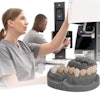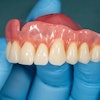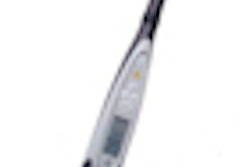The usefulness of the Diagnodent (KaVo) in determining caries-removal end points is "doubtful," according to researchers from Catholic University of Leuven (Journal of Dentistry, February 18, 2011).
They compared the mineral density of residual dentin after excavation with different caries-removal techniques, including laser-induced fluorescence (LIF) measured by the Diagnodent.
Carious teeth were excavated by tungsten-carbide round burs, ceramic burs, sono-abrasion, and chemomechanical excavation using two enzyme-based solutions or a sodium hypochlorite-based solution. The teeth were then scanned using micro-CT, and the mineral density at the bottom dentin was correlated to LIF measurements in the same region.
No statistically significant difference in mineral density was found at the bottom of the cavities prepared with the different caries-excavation techniques, the researchers noted. No significant correlation was found between the distance from the deepest cavity point to the pulp-chamber roof and LIF measurements.
However, a strong negative correlation (p < 0.01) was found between L* values and LIF measurements, indicating that staining in residual dentin leads to higher LIF measurements.
"LIF measured by Diagnodent is influenced by staining in residual dentin; therefore, its use to determine the caries-removal end point is doubtful," the authors concluded.



















